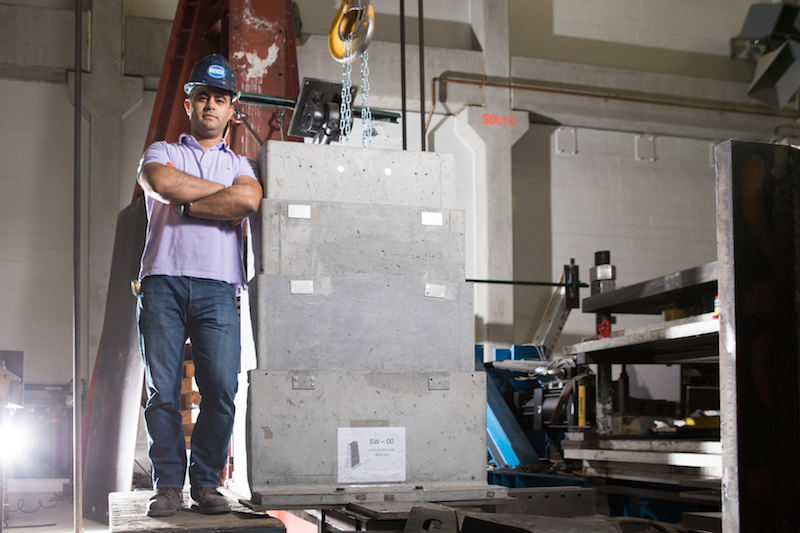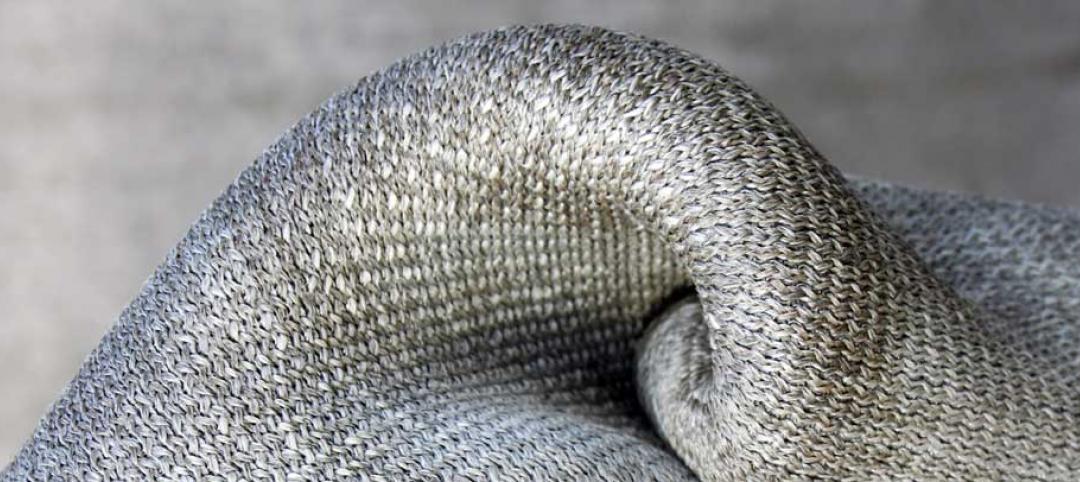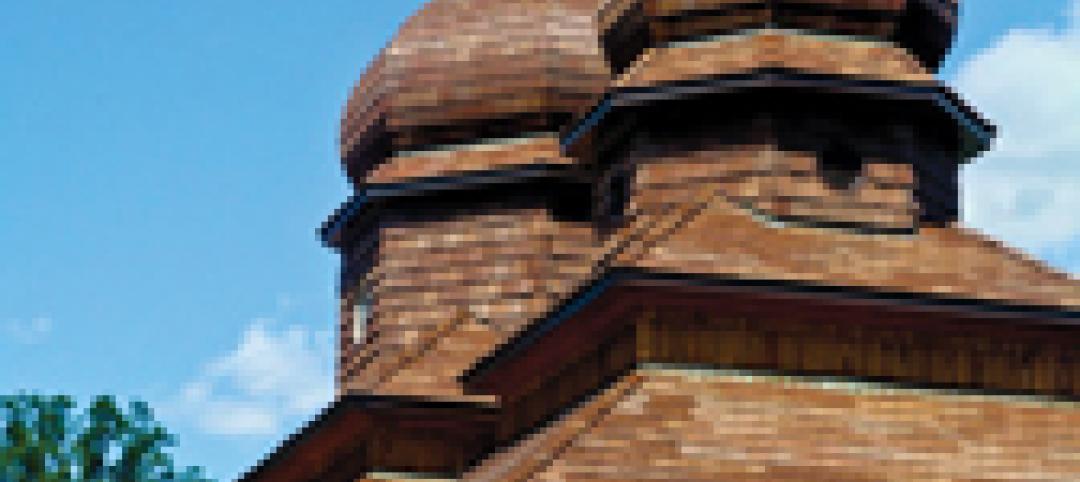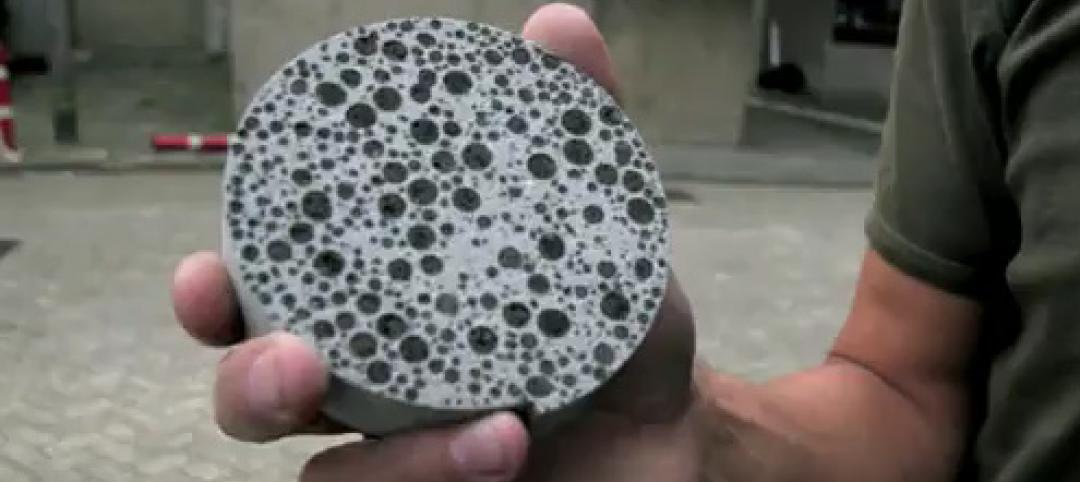Water is often times considered to be the most powerful force on the planet. Which means, under the right circumstances, it can also be the most destructive. All you have to do is watch footage from the tsunami that occurred in Japan in 2011 to understand just how devastating a force it can be. And when the water begins rising, be it from an ocean, lake, or river, it can seem like there is no stopping it from its relentless march forward. Jorge Cueto, a Ph.D. candidate at the University of Buffalo, however, has come up with an invention to try and do just that: stop floodwaters before they can ever reach homes or businesses.
Cueto came up with a patent-pending system of telescoping fiber-reinforced concrete boxes that he hopes to develop into “rise on demand” floodwalls. Think of Russian nesting dolls, but with concrete blocks.
Each section of the wall rises from another section that is just a little larger. Using a telescopic design such as this means that when the floodwalls are not needed, they will be able to retract underground so as not to block water views or roads and sidewalks, such as those around hospitals, that cannot be permanently blocked.
In order to keep the water from flooding into any open cracks that may result from where each block meets the one above and below it, Cueto is in the process of developing a system of gaskets to make the walls water tight. He is also working on expandable flaps to cover the space between each wall section.
Much of the science and plenty of technical aspects still need to be worked out before Cueto’s telescopic walls find a real-world use, but the main idea is in place and, if successful, Cueto’s invention could help prevent millions of dollars worth of damages due to floods.
For the full story, click here.
Related Stories
High-rise Construction | Jul 9, 2013
5 innovations in high-rise building design
KONE's carbon-fiber hoisting technology and the Broad Group's prefab construction process are among the breakthroughs named 2013 Innovation Award winners by the Council on Tall Buildings and Urban Habitat.
| May 14, 2013
Paints and coatings: The latest trends in sustainability
When it comes to durability, a 50-year building design ideally should include 50-year coatings. Many building products consume substantial amounts of energy, water, and petrochemicals during manufacture, but they can make up for it in the operations phase. The same should be expected from architectural coatings.
| Apr 23, 2013
Building material innovation: Concrete cloth simplifies difficult pours
Milliken recently debuted a flexible fabric that allows for concrete installations on slopes, in water, and in other hard to reach places—without the need for molds or mixing.
| Apr 19, 2013
Must see: Shell of gutted church on stilts, 40 feet off the ground
Construction crews are going to extremes to save the ornate brick façade of the Provo (Utah) Tabernacle temple, which was ravaged by a fire in December 2010.
| Mar 4, 2013
Legendary structural engineer Gene Corley passes away at 77
CTLGroup, an expert engineering and materials science firm located in Skokie, Illinois, is saddened by the news that W. Gene Corley, Ph.D., S.E., P.E., Senior Vice President, died on March 1, 2013 after a brief battle with cancer.
| Feb 25, 2013
Turner employs rare 'collapsible' steel truss system at Seattle light rail station
To speed construction of the $110 million Capitol Hill Station light-rail station in Seattle, general contractor Turner Construction will use an unusual temporary framing method for the project's underground spaces.
| Feb 22, 2013
Dutch team's 'bioconcrete' can heal itself
Two researchers from Delft Technical University in Holland have developed a self-healing cement that can stop microcracks from forming in concrete.
| Feb 20, 2013
Group of West Coast civil engineers developing building standards for tsunamis
A group of civil engineers from around the western U.S. is developing additions to the building code to address the threat of a tsunami.
| Aug 30, 2012
Holcim (US) announces new Deputy Chief Executive Officer
Ruiz began his career with the Holcim Group in 1986 as electrical supervisor with Holcim Apasco, Mexico, later becoming plant manager.
| Jun 1, 2012
New BD+C University Course on Insulated Metal Panels available
By completing this course, you earn 1.0 HSW/SD AIA Learning Units.

















